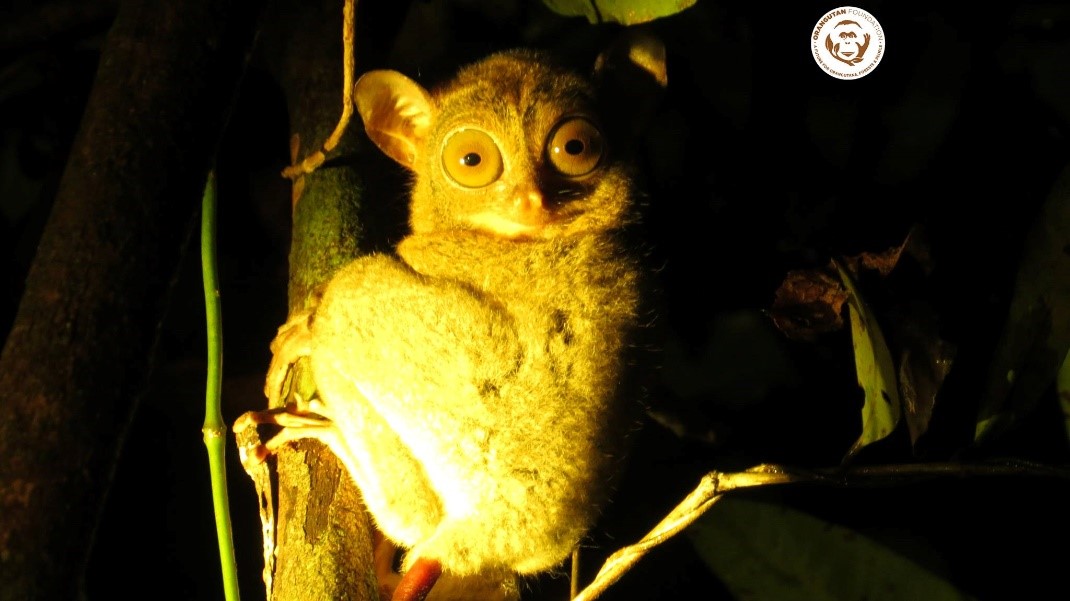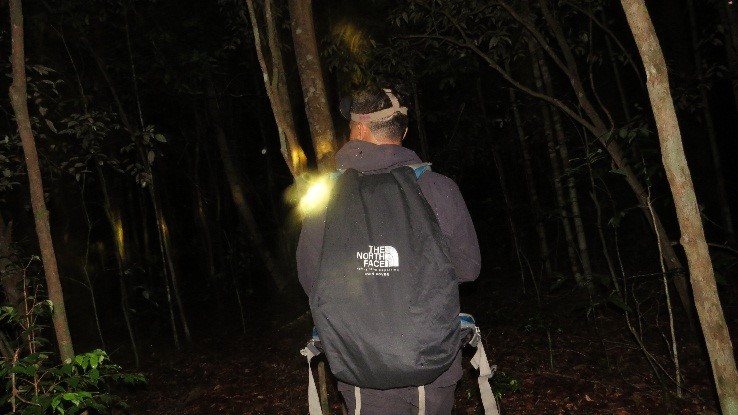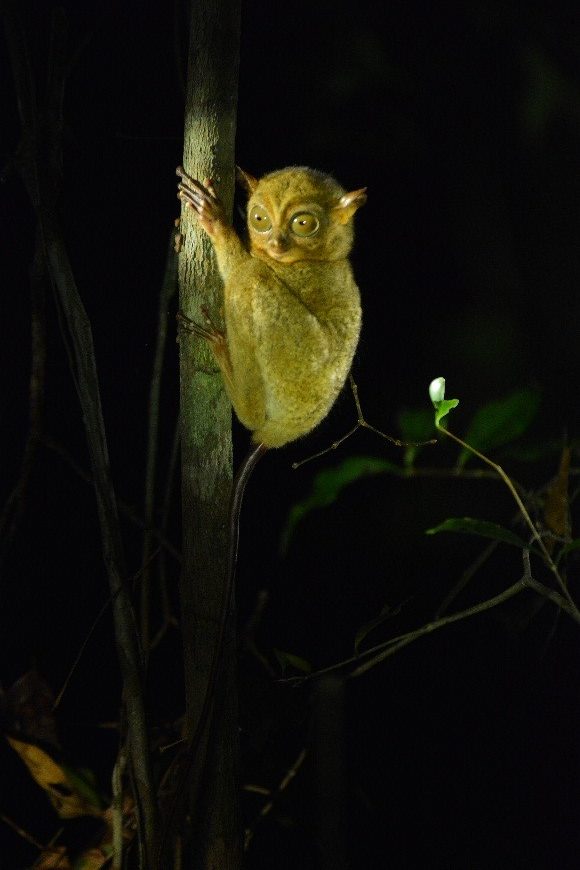#WildlifeWednesday: Tarsiers
The Orangutan Foundation manages a tropical forest research station in Tanjung Puting National Park, Indonesian Borneo.  Pondok Ambung Research Station is used as a base from which our field staff, students and international researchers can learn more about the flora and fauna of Borneo’s forests.These studies are vital when implementing strategies to best conserve rainforest habitat in this area.
Pondok Ambung Research Station is used as a base from which our field staff, students and international researchers can learn more about the flora and fauna of Borneo’s forests.These studies are vital when implementing strategies to best conserve rainforest habitat in this area.
We’ve just received an exciting report from our research manager on tarsiers.

TARSIER FACTFILE
- There are 10 known species of tarsier, all of which are found in Southeast Asia.
- Tarsiers are the only carnivorous primate, primarily feeding on insects, but have been recorded to feed on small birds, bats, frogs, crabs and even snakes!
- Tarsiers are small primates, averaging around just 13cm in length.
- They are nocturnal, using their large eyes and ears to hunt for prey at night.
- Their spines are specially adapted to allow them to turn their heads nearly 180° in each direction, perfect for locating prey.
- Tarsiers move by leaping; Bornean tarsiers have been recorded to jump distances over 5m!
- They are sexually dimorphic: males are larger than females.
- Tarsiers have been known to live for up to 16 years.
- They are generally found no higher than 2m above the forest floor.
- They tend to live in small groups of around 3 individuals.
- Tarsiers mark their territory with scent – using their urine!
A Tarsier is a primate which inhabits a range of different forest types. Their taxonomic classification is as follows:
| ORDER: |
PRIMATES |
| SUB ORDER: |
HAPLORRHINI |
| INFRA ORDER: | TARSIIFORMES |
| FAMILY: | TARSIDAE |
| GENUS: | TARSIUS |
The species our staff studied is known as the Bornean Tarsier (Tarsius bancanus boreanus). Bornean tarsiers are widespread throughout the island of Borneo. Listed by the IUCN as “Vulnerable”, Bornean tarsiers are threatened by the risk of extinction in the wild, as a result of habitat loss.


A population exists within the forests of Tanjung Puting National Park. Our field staff have conducted surveys to track this lesser-known species of primate. Locations where tarsier activity was identified were tracked using GPS. Our staff directly encountered two tarsiers, with 10 other indirect encounters from identifying their scent - left with urine.

All traces of tarsiers were found either near the river or in swamp forest, as this is where tarsiers obtain most of their food. Supporting other research, the two tarsiers spotted were found only in small trees, no higher than 2m from the ground.

Field staff reported heavy rain during tarsier observations, which made it difficult to spot and follow them in the dense vegetation.

It is vital we conserve these types of habitat for tarsiers by preventing human activity in this area of protected forest which leads to habitat loss. Limiting the amount of tourism in this area would also be beneficial so the area can be better managed.

Want to learn more about our research programme? Watch this short clip: